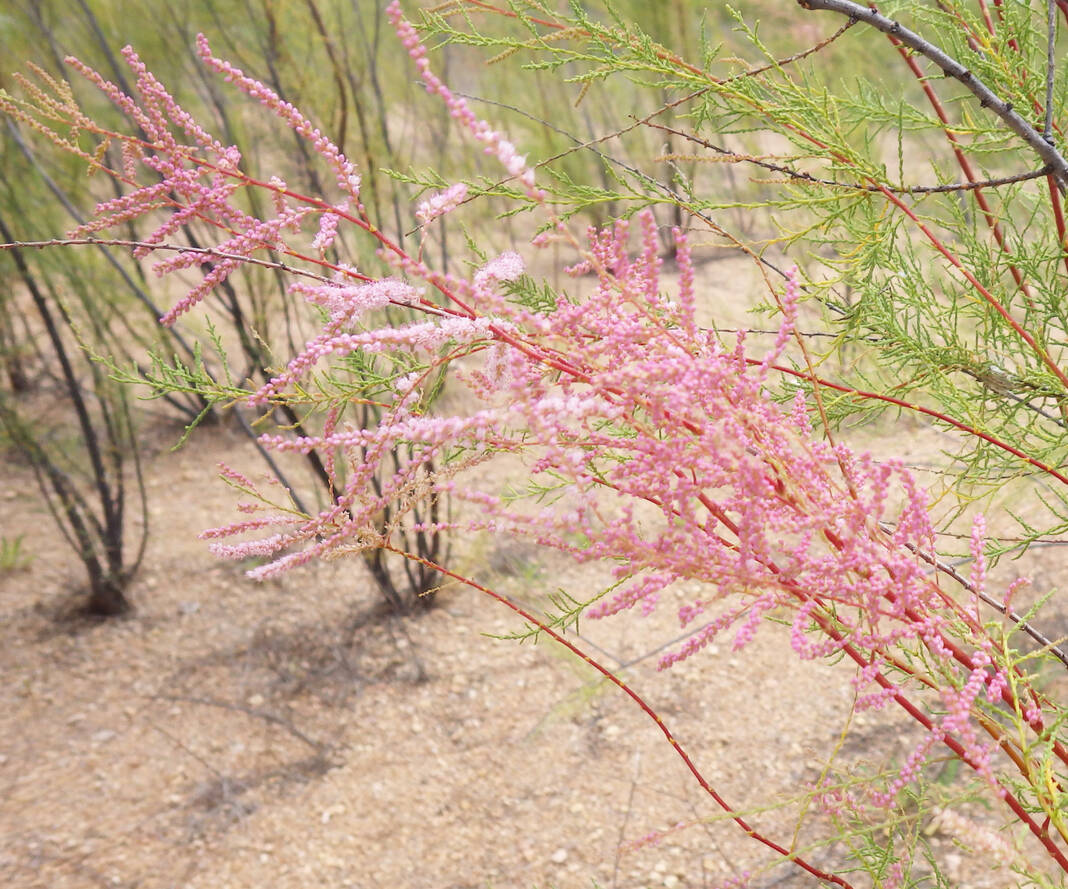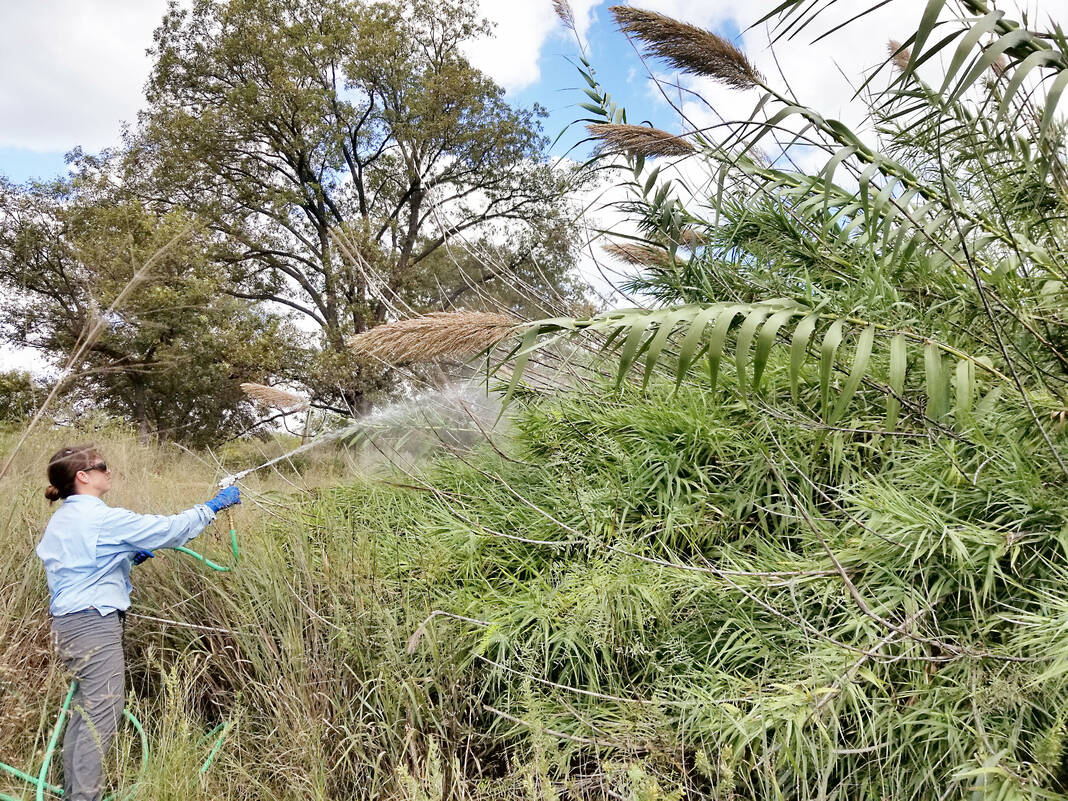So they came, and they won’t leave.
And this time we’re not talking about relatives.
Invasive species in the Rio Grande Valley range from the aggravating — think fire ants— to fruit pests like citrus canker, citrus greening and the Mexican fruit fly, which cost growers millions in losses.
Yet most invasives fall somewhere in the middle, although we tend to weigh their pros and cons based on how much direct impact they have on we humans.
But all of them share one thing and that is they pose a threat to native species.
Invasive species’ populations frequently explode when they find themselves in new habitats, having bypassed nature’s checks and balances in a new ecosystem that lacks the predators, parasites or diseases that keep things symmetrical.
Economically speaking, it’s no joke. Estimates place the cost of controlling or attempting to eradicate invasives at $219 billion annually just in the United States.
Riparian problems
Monica McGarrity is a senior scientist for aquatic invasive species with the Texas Parks and Wildlife Department.
“Giant reed is one of the most problematic down there on the Rio Grande,” she said. “There are hundreds upon hundreds of acres of Arundo down in the Rio Grande area, and it’s a problem for border security. It’s difficult for being able to see persons, or drugs, moving through the Arundo.”
“You can have someone put on a bright orange vest and step 10 feet into it and not be able to see them,” she added. “That’s been a really big problem.”
The giant reed, Arundo donax, isn’t the only aquatic or near-aquatic species plaguing the Valley in riparian areas located on or near water.
“You certainly have salt cedar. It seems Arundo is more dominant but in some areas salt cedar can be problematic,” McGarrity said. “Both Arundo and salt cedar kind of have impacts on the shape of the channel, and it may not be quite as dramatic on a river as wide as the Rio Grande. But in narrow areas you can have them anchor the bank and cause the river to become deeper and it also can cause erosion along the bank.”
Hydrilla, a submersed plant, also causes problems although McGarrity says she hasn’t heard of any substantial issues with the plant lately.
“In years past, watermasters were having to push additional water from the dams to meet downstream flow requirement because the hydrilla in the river caused so much drag on the water that the water wasn’t actually able to get through,” she said.
“There’s also some water hyacinth down there, but I believe most of that is in the resacas,” McGarrity said. “It can cause problems for people getting access to fishing, certainly, if it covers the entire surface of the water.”

Fishy issues
It isn’t just invasive plants damaging the ecosystems here, either.
“We also have invasive fish down there, tilapia, and Falcon Lake is one where there are tilapia,” she said. “We don’t really know a lot about whether they are having impacts on the native fish. We haven’t seen anything dramatic, but they do compete with native fish like bass for nesting space so there is potential for them to be having negative impacts on our fish.”
“We also have sucker-mouthed, armored catfish — plecos — algae eaters in the aquarium trade,” she added. “They’re present in a lot of the resacas down there and we don’t know what kind of an impact they’re having on aquatic life. But they seem to be dominating the aquatic life, and they can also increase the turbidity of the water, cause bank erosion, that sort of thing, they do burrow into the banks.”
Then there’s the recently discovered Australian red-claw crayfish, another aquarium release like the plecos, found near Brownsville.
Join the fight
McGarrity and other TPWD scientists say everybody has a stake in preventing and limiting the spread of invasive species.
“One of the things they can do to discourage things like zebra mussels, which we don’t have in Falcon Lake yet, although we do have a record of quagga mussel larvae in Lake Amistad, but we don’t know if they’re going to establish a population,” she said.
“Folks can make sure to clean, drain and dry their boats before moving between water bodies,” she added. “If zebra mussels were to get established in Falcon Lake they could cause a lot of problems there.”
Anglers also need to be careful and not dump their bait back in the water before heading home.
“The native Rio Grande cichlid down there has been moved around the state fairly widely, we believe by being used as live bait,” McGarrity said. “There could be other species that could be moved and we really encourage people to use their bait on the lake where they catch it. And never release live bait.”
McGarrity also said the spread of invasives can be blunted by homeowners committing to plant native species in their yards.
She also recommends trying to prevent spreading seeds after hiking and to clean off clothing, boots, ATV or other recreational equipment before leaving the site.
“Even check your pets for seeds,” she said.
Hauling along firewood on the way to a camping trip also is problematic. McGarrity says this is the likely mode for the spread of several species of destructive insects.
“Try to buy your firewood where you burn it, as close as you can, because that’s how the Asian longhorned beetle, for one, has been moved around,” she said. “Do a little research, find a grocery store or gas station near where you’re going to be camping, and make sure you go there to buy your firewood before you camp.”




